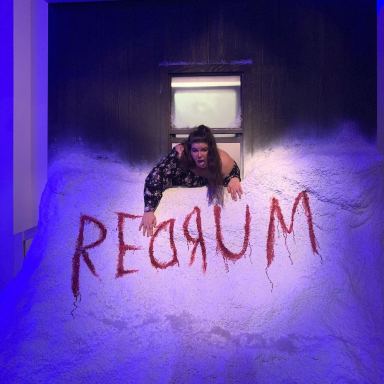26+ Movies About Hell: Never-Ending Horror
Most world cultures and religions feature some idea of an afterlife where the souls of the dead are tormented.
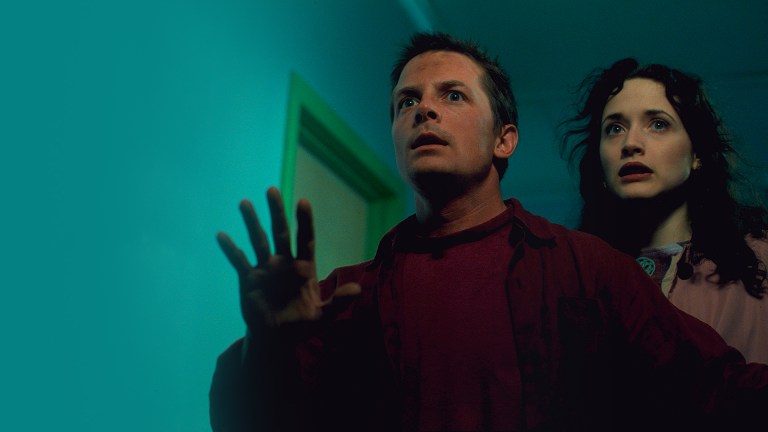
Table of Contents
The idea of hell—a place of eternal torment where you are never allowed to truly die and are instead tortured forever and ever and ever—is perhaps the most horrific idea ever concocted. Thus, it is the perfect setting for horror movies. There is no possible better setting.
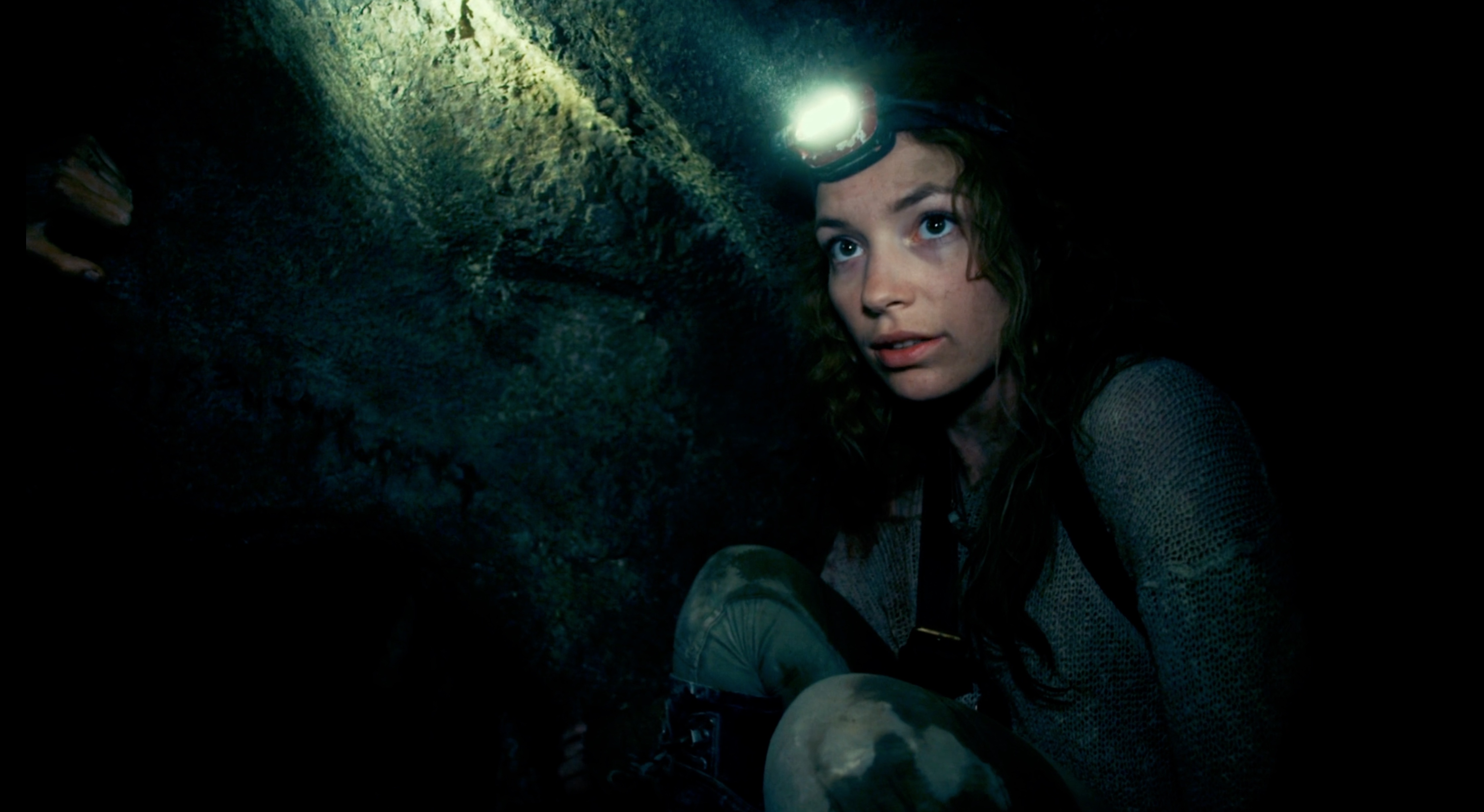
Most world cultures and religions feature some idea of an afterlife where the souls of the dead are either tormented forever—as in Christianity—or they are sent through a designated period of purgatorial suffering, after which they ascend to heavenly bliss (as in almost all other religions).
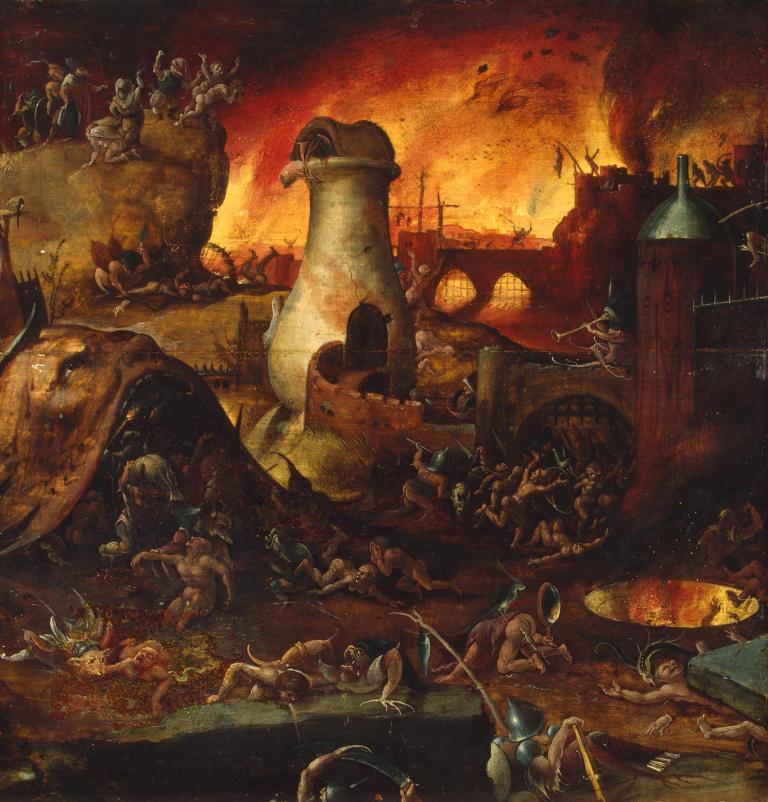
The word “hell” is derived from a proto-germanic word referring to the lair of the dead in Norse mythology, but when one says “hell,” they’re referring to the same place that the Greeks called Hades, the Romans called Tartarus, the Hebrews called Gehenna, and the Muslims referred to as Jahannam.
Hell is mostly depicted as extremely hot, or in rare instances (such as Dante Alighieri’s ninth circle of hell, which is a frozen lake, or in certain Buddhist sects, which feature innumerable cold hells), the torment is due to extremely cold temperatures. One thing is for sure—it’s never springtime in hell. It’s either way too hot or way too cold.
Interestingly, whether or not hell is eternal, most of these religions and mythological systems depict it as an actual place beneath the ground where souls endure unimaginable pain through intense heat. At the time these belief systems were formed, science had not yet discovered that the ground below us was mostly as hot as hell. How could this be coincidental? And how much of it is due to some deep ancestral awareness that the Earth is molten at its core?
More modern interpretations of hell don’t depict it as a place but rather a state of mind where suffering comes from eternal separation from God’s love. Whether you see hell as an actual place or a state of extreme mental distress, here are some of the best movies ever made about hell.
Movies About Hell
Jigoku (1960)

This film, set in Japan during the 1960s, interweaves the tales of several different sinners as they are perched on the precipice of death and hell. It is most notable for its full-color, unflinching depiction of humans being tormented while swirling around in molten lava. It is also considered the first film to make extensive use of full-color gore—even before 1963’s Blood Feast. The Buddhist conception of hell is similar to the Roman Catholic vision of purgatory—it’s a place where sins are atoned for after death before the soul moves on to a more heavenly abode. Writing for the Criterion Collection, Chuck Stephens remarked, “Overflowing with brackish ponds of bubbling pus, brain-rattling disjunctions of sound and image, and at times almost dauntingly incomprehensible plot twists and eye-assaulting bouts of brutish montage, Jigoku is more than merely a boundary-pummeling classic of the horror genre—it’s as lurid a study of sin without salvation as the silver screen has ever seen.”
The Sentinel (1977)
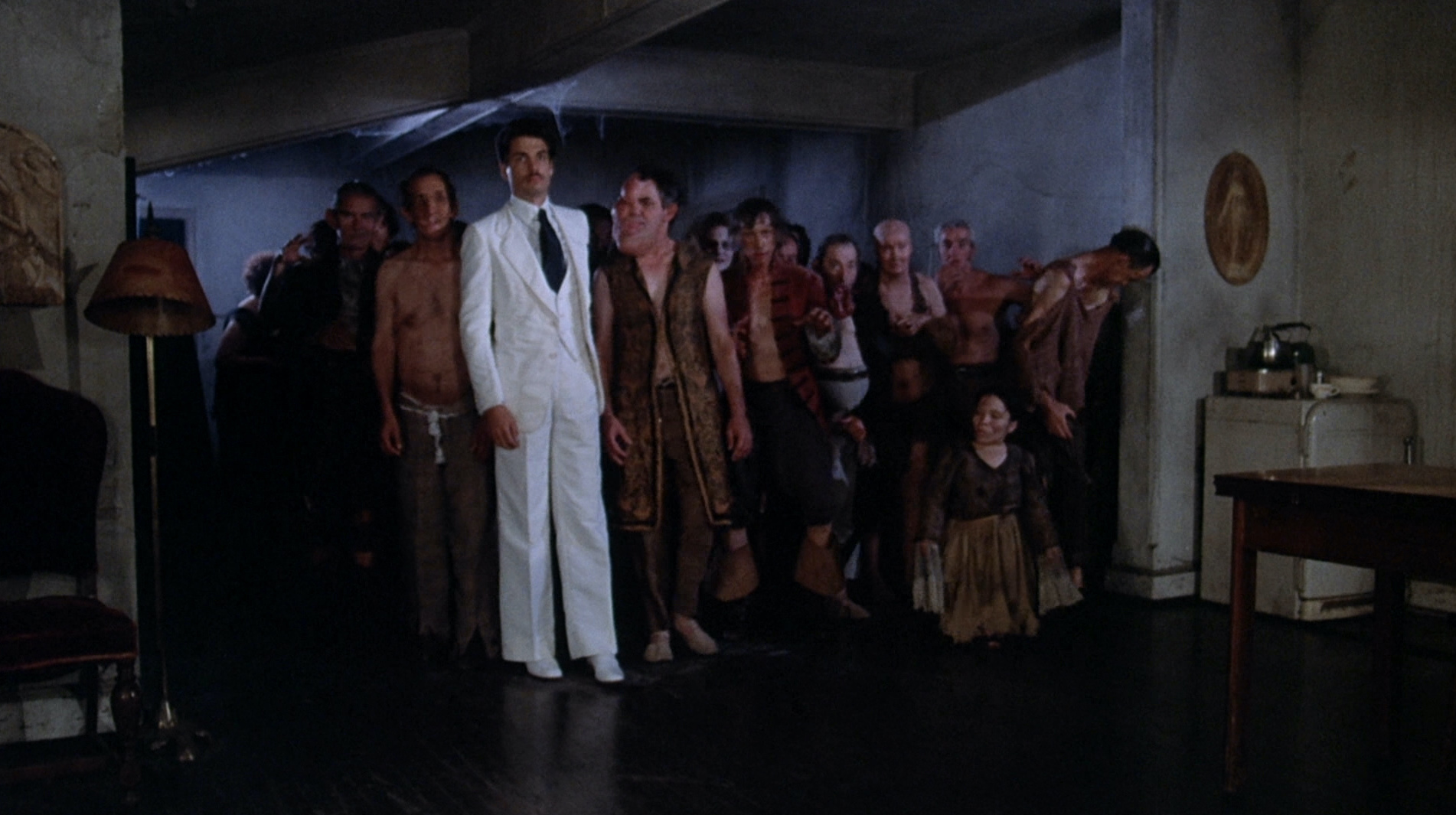
Christina Raines stars as Alison Parker, a gorgeous but suicidal fashion model who moves into a historic building in Brooklyn Heights and almost immediately begins suffering from fainting spells and insomnia. She is at first dismissed as crazy when she starts seeing hellish hallucinations in various rooms of the building—and she is at first suspected of murder when it seems as if she killed someone—but when she also discovers the sudden ability to read Latin, a discerning priest starts to suspect that Alison is demon-possessed and the apartment building is merely a portal to hell. The all-star cast includes Ava Gardner, Chris Sarandon, Burgess Meredith, Sylvia Miles, Eli Wallach, Jeff Goldblum, Christopher Walken, Tom Berenger, and Beverly D’Angelo. Although reviews of the film itself were mostly negative, the 1982 book The Films of the Seventies cites the ending scene, in which Allison is terrorized by the “armies of Hell,” is “undoubtedly one of the most terrifying interludes in seventies cinema.”
Legend (1985)
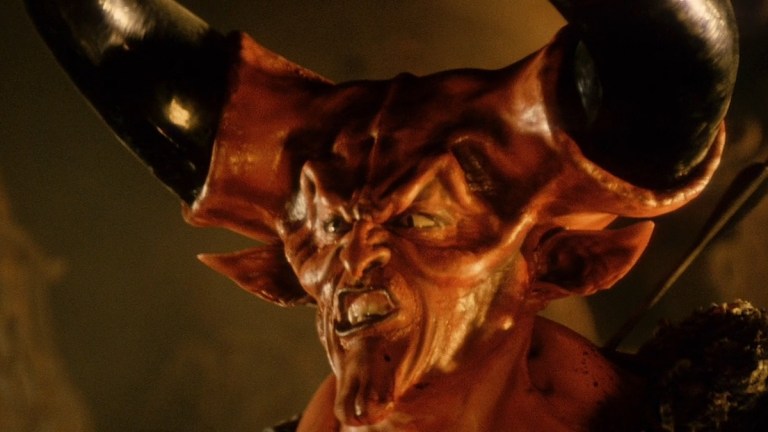
In this fantasy horror film by director Ridley Scott, Tim Curry of Rocky Horror Picture Show fame stars as Darkness, a demonic character who lives below the ground and seeks to bring eternal night to the beautiful world of elves and unicorns and sunshine that flourish just above the Earth’s crust. He also has evil designs on the Fairy Princess Lili (Mia Sara), but brave forest boy Jack (Tom Cruise) seeks to rescue the Princess and thwart Darkness’ sinister plans to bring literal hell on Earth. Giving the film two stars, Roger Ebert says, “It tells of a time long, long ago, when unicorns roam the Earth and the powers of light and darkness are at war. An evil prince named Darkness lives in caverns far beneath the Earth, scheming to blot the sun out of the lives of all the planet’s creatures and to rule the gloom forever.”
Hellraiser (1987)
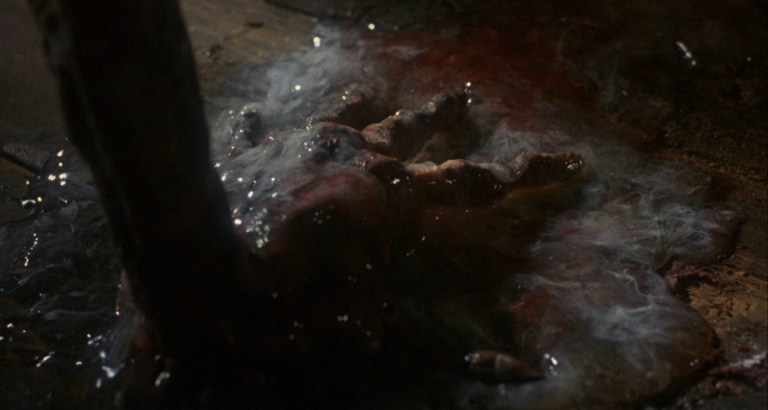
Clive Barker’s original classic would spawn nine additional sequels by 2018 to become what is undeniably the largest hell-related movie franchise in history. In Hellraiser, the “hell” is “raised” when someone tinkers with a small mirrored cube variously known as the Lament Configuration Box or The Devil’s Toy Box, which can inadvertently open a portal to hell and release hideous creatures known as Cenobites. According to Barker’s vision, the Cenobites act basically as bounty hunters for hell and are sent to drag escaped souls back down to eternal torments—or, if they can’t get them all the way back to hell, they’ll just torture them right where they found them.
Hellbound: Hellraiser II (1988)

Picking up where Hellraiser left off, the sequel finds Kirsty Cotton (Ashley Laurence) confined to an asylum because no one will believe her story that her father (Andrew Robinson) is stuck screaming in hell and being tortured by sadistic demons due to the double-crossing of her devil-worshiping mother (Clare Higgins). To help rescue her father from hell, Kirsty enters the “Labyrinth,” which is a giant version of the Devil’s Toy Box, and battle the forces of evil herself. All the while, Kirsty is unaware that it’s the head of the asylum who unleashed the demons in the first place. This is the rare movie where hell is either a place or a state of mind—but it can’t possibly be both.
What Dreams May Come (1988)
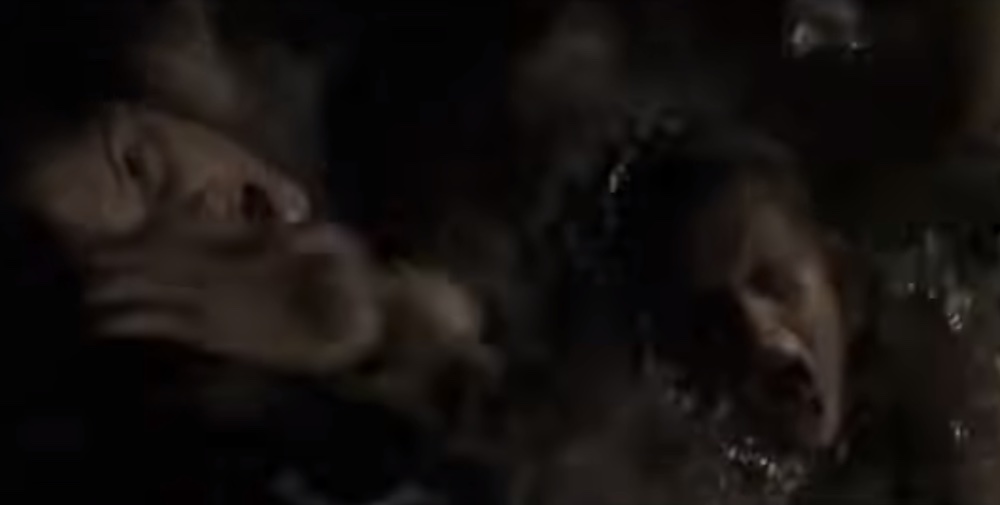
This is the only movie about hell to win an Academy Award for Best Visual Effects merely for how vividly it depicted the underworld. Robin Williams stars as Chris Nielsen, a pediatrician who dies in a car accident and finds himself in heaven. But shortly after his death, his wife (Annabella Sciorra) commits suicide and is sent to hell. Chris makes it is mission to descend into hell and rescue his wife. In one unforgettable scene, he walks across a giant plain of disembodied faces as they scream at him to stop. Throughout the film, the line between hell as a place and hell as a state of mind becomes blurred beyond recognition. The film was based on a novel by Richard Matheson.
All Dogs Go To Heaven (1989)
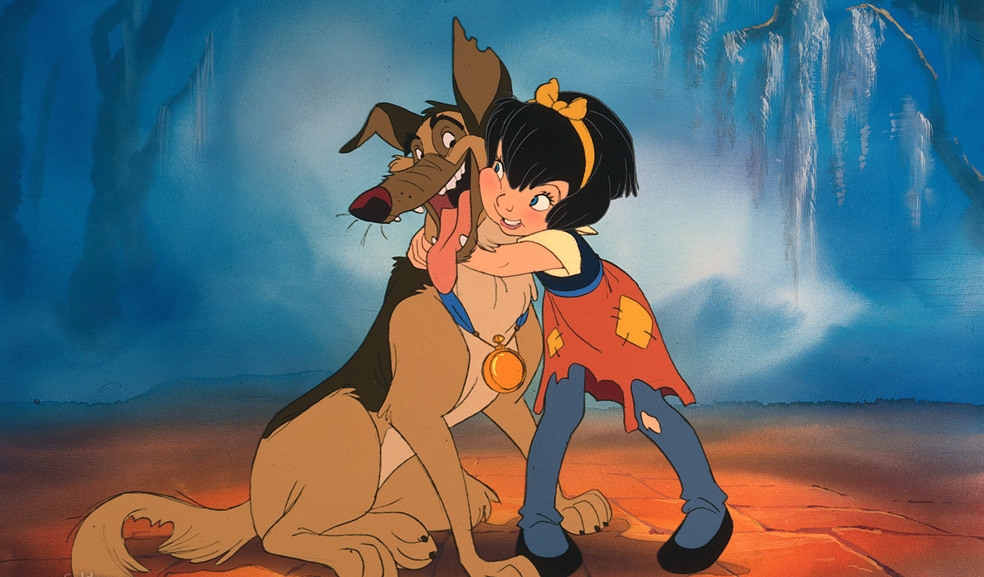
This animated feature is mostly a heartwarming story about a murdered dog named Charlie (voiced by Burt Reynolds), who returns to Earth and adopts an orphan girl who has the ability to communicate with animals. She sends him on the path of his killer. But there is a very graphic scene in which Charlie dreams that he has been condemned to hell that one Redditor described as “one of the scariest depictions of hell I’ve ever seen.” Charlie falls deep into a dark canyon teeming with molten lava and is tormented by a voice telling him “you can never go back” as he sinks into the fiery lake.
Jacob’s Ladder (1990)
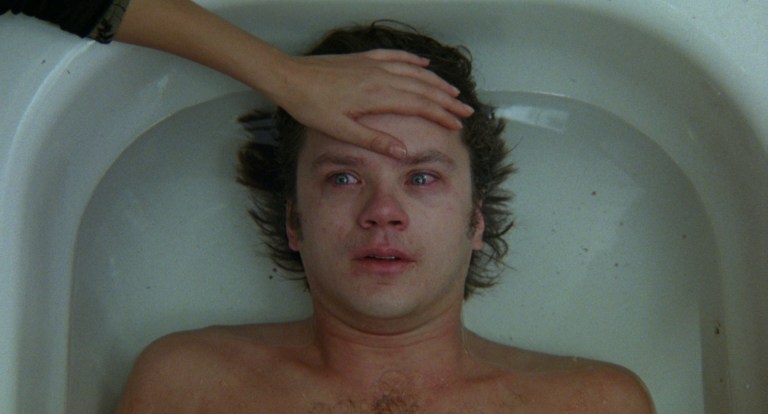
File this one neatly into the “hell as a state of mind” category. Tim Robbins portrays returning Vietnam Vet Jacob Singer. Traumatized after a brutal attack on his platoon by the Viet Cong, he returns to New York City to find himself tormented by grisly hallucinations and horrifying flashbacks. While in a mental hospital, a friend seeking to help him describes hell as it was depicted by Meister Eckhart, a Christian mystic from the 1300s: “Eckhart saw Hell too. He said: ‘The only thing that burns in Hell is the part of you that won’t let go of life, your memories, your attachments. They burn them all away. But they’re not punishing you,’ he said. ‘They’re freeing your soul. So, if you’re frightened of dying and … you’re holding on, you’ll see devils tearing your life away. But if you’ve made your peace, then the devils are really angels, freeing you from the earth.'” The main tension in the movie comes from the uncertainty of whether Jacob will be able to rescue himself from his own personal hell before things get so bad that he’s forever doomed.
Bill & Ted’s Bogus Journey (1991)

Bill & Ted, along with Wayne & Garth and Beavis and Butt-head, were a pair of quintessential 1980s dudes—fun-loving but not entirely bright. In the sequel to 1989’s Bill & Ted’s Excellent Adventure, our heroes are inexplicably replaced by robot replicants of themselves. Their corporeal selves fall down a black hole for what seems like minutes until they finally land on hell’s floor. To their bemusement, they find the whole place to be much more lackluster than they’d expected. Bill says, “We got totally lied to by our album covers.” But their hell is also a personal kind, as they wind up tormented not merely by heat and demons, but by their worst fears—such as being kissed by an elderly relative or by being confronted by an oversized Easter bunny. One scene is a parody of Ingmar Bergman’s The Seventh Seal in which the boys must beat Death in a game of their choosing.
The Frighteners (1996)
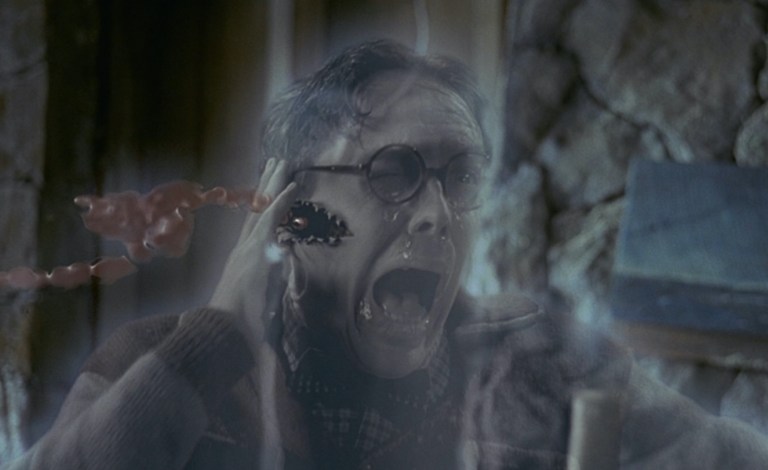
Director Peter Jackson made this film before he became one of Hollywood’s most bankable auteurs. It stars Michael J. Fox as an an architect who loses his wife in a car accident and subsequently realizes the tragedy has granted him the ability to see ghosts. He must team up with a gang of sympathetic ghosts to stop a murderer who has returned from the dead with the intent of killing more people. In this film, hell is a place—it’s the slimy, quivering insides of a gigantic worm who has tentacles that bite.
Event Horizon (1997)

This sci-fi horror film set in outer space only suggests the presence of hell, but the suggestion is enough to induce fear and trembling. The title refers to the name of a spaceship that had disappeared years ago but then suddenly reappeared in orbit around the planet Neptune. What happened in the interim was that Event Horizon had entered a black hole for the purpose of expedited space travel. But when a search team finds the spacecraft listlessly orbiting Neptune, they were not prepared for the gore and horrors that awaited them aboard. Apparently it’s never a good idea to enter a black hole merely to save some time. Filmmaker Paul W.S. Anderson was forced to cut the running time from 150 minutes to 90 minutes based on complaints about the extreme gore, but the edited version remains plenty gory for most tastes.
Constantine (2005)

John Constantine (Keanu Reeves) portrays the complicated role of a suicide survivor and demon hunter who has literally been to hell and back—he paid a brief visit there after trying to kill himself. But now that he’s alive and out of hell, he has one mission—to redeem himself in God’s eyes and earn a place in heaven by demonstrating sufficient goodwill. Otherwise, it’s back to hell with him when he dies. The vision of hell as depicted by the filmmakers was one unending nuclear blast. To achieve this, they relied on footage from the 1984 nuclear-apocalypse movie The Day After and mixed it with real photos of human autopsies. The film is partially inspired by DC/Vertigo’s Hellblazer comics.
Drag Me to Hell (2009)
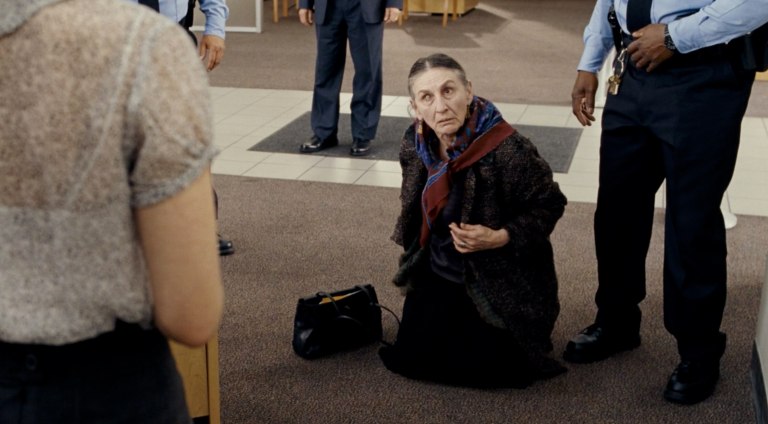
In this sci-fi horror by director Sam Raimi, Alison Lohman (who did most of her own stunts) portrays Christine Brown, a clerk at an LA bank whose picture-perfect life takes a turn for the worse when she denies an elderly woman’s request for a refinancing on her home loan. The old woman places a curse on Christine and threatens her with an eternity of torture amid hellfire. The more that Christine fights to avoid the inevitable, the lower she seems to sink into hell. “Drag Me to Hell is a sometimes funny and often startling horror movie,” writes Roger Ebert. “That is what it wants to be, and that is what it is.”
Dante’s Inferno: An Animated Epic (2010)

This is not merely the only full-length animated feature entirely devoted to hell in world history—it is definitely also the only adult feature of its kind. It was also apparently made merely as a tie-in to a video game. According to Film Critics United, “To launch their explosive new video game ‘Dante’s Inferno,’ Electronic Arts has also simultaneously launched an explosive new animated movie based on this game, which naturally is based on Dante’s classic poem ‘The Divine Comedy’ in ‘Dante’s Inferno: An Animated Epic’, a decidedly adult themed animated feature displaying boobs, blood and plenty of beheadings and head splittings, all mated to some gloriously styled animation.” The basic plot involves Dante, who returns from the Third Crusade to find his family members slain and his beloved Beatrice slowly dying from a stab wound. After Satan grabs and drags Beatrice to hell as she dies, the poet Virgil suddenly appears before Dante and offers to be his tour guide through hell. They go through all the circles—Lust, Limbo, Gluttony, Wrath, all of them—as Dante desperately seeks to rescue his fiancee from eternal damnation.
As Above, So Below (2014)

Perdita Weeks stars as archeologist Scarlett Marlowe, whose entire professional career has been devoted to finding the legendary Philosopher’s Stone, which is rumored to have the ability to turn metal into gold and grant its owner eternal life. After being informed that the Stone is somewhere deep in the Catacombs of Paris—an 180-mile system of tunnels that allegedly contain the corpses of up to six million people—Marlowe and her team of researchers start to suspect that they’ve entered a living hell.
More Movies About Hell
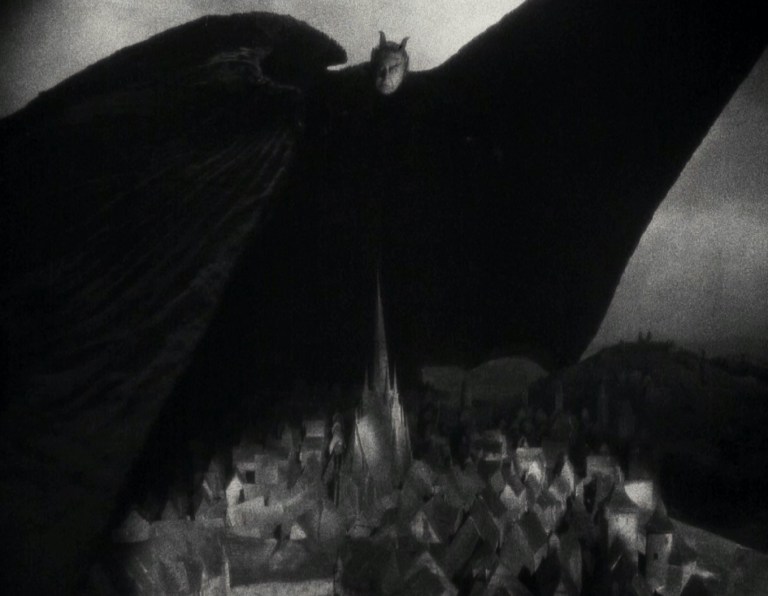
- The Infernal Cauldron (1903) from genius silent film pioneer Georges Méliès comes this two-minute depiction of a green demon dancing among the tortured souls of the damned.
- L’Inferno (1911) this feature-length silent Italian film bases its depictions of hell on Dante Alighieri’s Divine Comedy as well as Gustave Dore’s drawings.
- Rapsodia Satanica (1915) Satan tempts youths with sensuality, then ensnares them in a pit of eternal torment.
- The Phantom Carriage (1921) rumored to be one of Ingmar Bergman’s favorite films, this silent Swedish masterpiece tells of a carriage driver who must collect the souls of the doomed.
- Faust (1926) in F.W. Murnau’s silent masterpiece based on Goethe’s immortal play, God and Satan battle over an alchemist’s soul.
- Hellbound Train (1930) is a cautionary short film marketed toward African American churches about how “the Devil rejoices” whenever the faithful yield to temptation.
- This Night I’ll Possess Your Corpse (1967) is like The Wizard of Oz in that during a crucial point in the film, everything switches from black and white to color—only this time, all the bright colors are down in hell.
- The Apple (1980) in this universally despised rock opera that was described by its producer as “1984, but with music,” a very stylized, glam-rock, Disco Hell makes an appearance.
- The House by the Cemetery (1981) was the first film in Italian director Lucio Fulci’s “Gates of Hell” trilogy.
- The Beyond (1981) was the second film in Fulci’s “Gates of Hell” trilogy and was heavily censored in the USA due to its extreme gore content.
- Prince of Darkness (1987) a priest finds a strange slime that spreads hell on Earth wherever it goes.
- The Gate (1987) when teens investigate a hole left in the backyard by a tree-removal service, they realize that the hole leads all the way down to hell.
- Highway to Hell (1991) a demon forces two people into a road race—with the loser going to hell.
- Tales from the Hood (1995) is a three-part horror comedy anthology in which all stories are set in a funeral parlor that turns out to be hell.
- The Ninth Gate (2000) Johnny Depp plays Dean Corso, who’s searching for a rare book from the 1600s written by Satan and called The Nine Gates. Directed by Roman Polanski.
- Hellraiser V: Inferno (2000) in the fifth installment of the Hellraiser series, a detective finds Lemarchand’s box while investigating a crime.
- Hell (2011) the sun grows suddenly brighter and hotter, turning life on Earth into a living hell.
- The Devil’s Carnival (2012) is a horror musical set in hell where the entertainment is overseen by Satan.
- Hell Baby (2013) a couple move into a haunted house and then give birth to a demonically possessed baby.
- Baskin (2015) is a Turkish horror film where five cops accidentally stumble into hell.
- Errementari (2017) is based on Basque folklore and according to director Paul Urkijo Alijo features “a dramatic sequence of demons herding sinners into the (very literal) mouth of hell.”
- The House That Jack Built (2018) is an updated Divine Comedy in which a serial killer (Matt Dillon) is led by the poet Virgil through Dante’s nine circles of hell.
- Devil’s Revenge (2019) an archeologist finds a haunted relic in a cave that opens a portal to hell.
